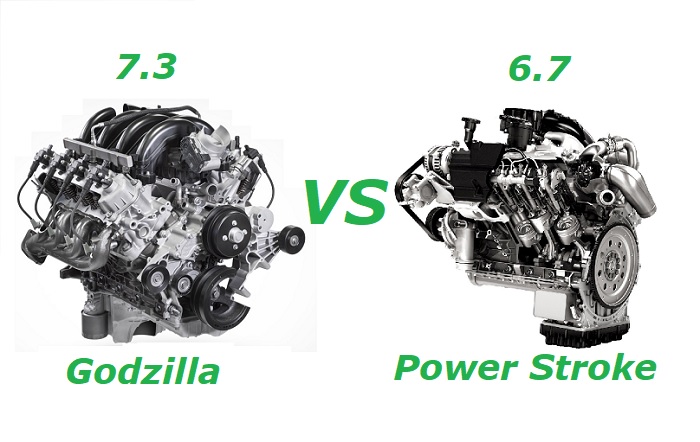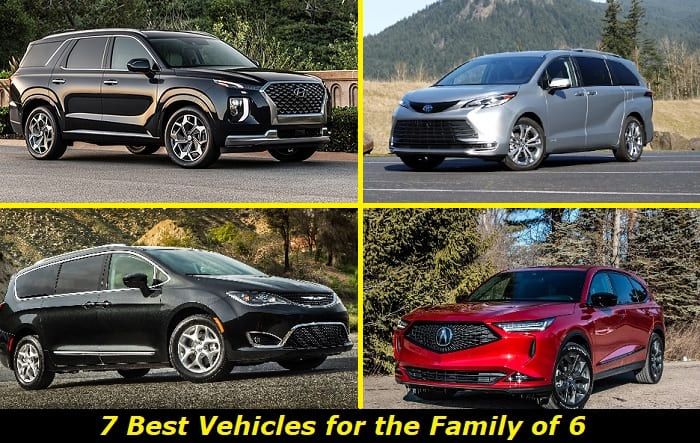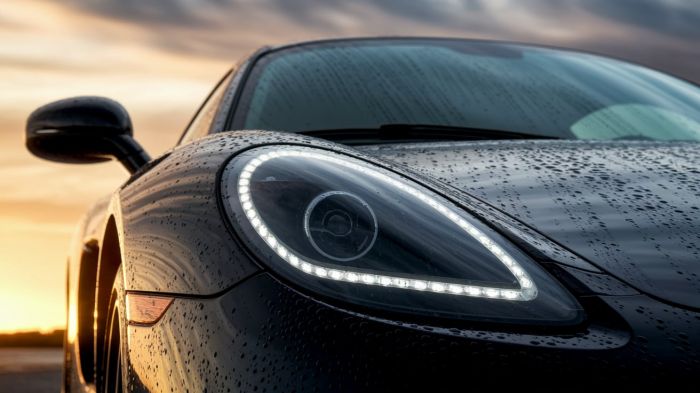Whether you are looking for the best engine for a heavy-duty pickup truck or a wild engine swap for your muscle car, the most common results in your search will probably have either the 7.3 Godzilla or the 6.7 Power Stroke engines. So now, you want to streamline your choices and you start visiting forums, yet most of the people there would most likely be still divided between the two.
Comparing the 7.3 Godzilla vs 6.7 Power Stroke is like pitting two kaijus or titans against each other since we are talking about the best of the best workhorses featuring no non-sense, powerhouse specs that really mean business. These make the two ideal for heavy workloads or pure, wild recreational fun whether on track, on-road, or off-road.

Key features and my opinion about the 7.3L Godzilla engine
- Production years:2020-now
- Average lifespan of 7.3L Godzilla:400,000-500,000 miles
- Fuel supply type:port injection
- Power range:300-430 hp
- Fuel efficiency:awful
- Engine block material:cast-iron
- Engine reliability score:high
- The most common problems:phasers are faulty, oil and coolant leaks, enormous fuel consumption.
Key features and my opinion about the 6.7 Power Stroke engine
- Production years:2011-2016
- Average lifespan of 6.7 Power Stroke:240,000-270,000 miles
- Fuel supply type:Common Rail
- Power range:330-475 hp
- Fuel efficiency:average
- Engine block material:cast-iron
- Engine reliability score:medium
- The most common problems:turbo problems, cooling system issues, weak sensors, CP4 pump problems.
7.3 Godzilla
The 2021 Ford 7.3 Godzilla engine, as its name says, is one of the most powerful and technologically advanced engines ever produced in this world, which makes it an incredible powerhouse with a high level of utility and functionality. Although it was primarily built for heavy-duty pickups, it has also gained a massive following from people who are fond of engine swaps in muscle cars. The unit came as a replacement for the Modular 6.8-liter V10 and the Boss 6.2-liter V8 engines of Ford.
1. Design
As the numbers in its name imply, the Godzilla is a gasoline-fed, naturally-aspirated V8 engine that boasts 7.3 liters displacement. It is comprised of durable cast-iron block construction and a lightweight aluminum cylinder head. The engineering not only keeps the engine light at 540 lbs, but it also helps in its cooling process.
Moreover, it is characterized by its overhead valve (OHV) valvetrain structure with a compression ratio of 10.5:1 translating to higher thermal efficiency and production of more mechanical energy. This gives the vehicles fitted with the Godzilla engine the right power that they need.
2. Performance
The 7.3 Godzilla peaks at 430 horsepower at 5,500 rpm and 474 lb-ft of torque at 4,050 rpm. The massive power of the engine enables a heavy-duty pickup to tow 12,300 to 15,000 lbs. of equipment and carry a maximum payload of 3,500 to 4,200 lbs.
When it comes to engine swaps with matching tuning for high-performance vehicles, the highest-rated output achieved for the 7.3 Godzilla so far was at 1,450 hp and 1,030 lb-ft of torque with a redline of 8,500 rpm. According to Whipple Superchargers whose team was responsible for the project, they fitted the engine with Stage 3 heads complete with a new camshaft, dry-sump lubrication, pistons, and connecting rods. It also came with an ECU tune and superchargers.
3. Fuel Economy
One of the best features of the 7.3 Godzilla is that it offers variable tuning. This way, it can be adjusted depending on the priority of the user, whether it is performance or fuel efficiency.
Accounts regarding the fuel economy of the engine vary from one user to another due to their different vehicles, driving habits, road conditions, environmental conditions, equipment installed, cargo carried or towed, wear and tear of the auto, and other factors that significantly affect fuel consumption.
However, a few drivers claim that it is possible to get as much as 18 to 19 mpg with the unit when cruising at speeds around 55 mph without any payload. An average number of them reported taking between 12 and 14.9 mpg when the bed is empty and not towing anything. With cargo at tow or on the bed, many people claim that it can go from 7 mpg to 10 mpg at best.
4. Reliability
The Ford 7.3 Godzilla is a relatively new product because its production only started in 2020. Therefore, it's hard to arrive at an evaluation based on its actual performance. Its predecessor, the 6.2L V8 that came out on the market in 2011, is capable of accumulating over 300,000 miles. If the 7.3 Godzilla can indeed replicate that, then, buyers are sure to get a bang for their buck.
5. Cost
Speaking of price, the new crate 7.3 Godzilla engine costs $8,150 if bought directly from Ford Performance. That does not include the taxes yet and may vary slightly depending on the area you purchased it from but it comes with free shipping as a bonus.
In a tuned stage, including bolt main block, a supercharged 7.3L Godzilla can drive you back up to $38,000. That's already good for a thousand horsepower output.
6.7 Power Stroke
The 6.7 Power Stroke has been in production since 2011. It has undergone revisions over the years to provide the best performance, reliability, utility, and driving experience to customers. From its introduction, its power has seen major increases to deliver optimum performance.
1. Design
The latest generation of the diesel-fed Power Stroke engine, which was produced in 2020, comes with a 6.7-liter displacement. It is constructed with aluminum heads and compacted graphite iron block to maintain a weight of 970 lbs. while keeping in mind its resiliency. It has an OHV structure, hyper eutectic piston, and compression ratio of 15.8:1.
2. Performance
The 6.7 Power Stroke has been upgraded in 2020 to deliver up to 475 hp at 2,800 rpm and 1,050 lb-ft of torque at 1,800 rpm. In a Super Duty truck, it can withstand a payload of 12,000 lbs. and tow equipment as heavy as 30,000 lbs.
In the tuning department, the crate version of the engine can take an extra 200 hp. With the proper setup, it can also handle an additional 200 lb-ft of torque.
3. Fuel Economy
Again, this is a very divisive area because of so many factors contributing to it. By far, the best rating derived from a 1,000-mile trip was 19.9 mpg. At max payload or towing capacity, it could easily go down at around 10 mpg like the Godzilla.
4. Reliability
Another factor that elevates the 6.7 Power Stroke from other alternatives is its tested and proven reliability. Based on the consensus obtained from its 11 years of existence, the engine can last over 250,000 miles with periodic maintenance and proper care.
5. Cost
It's hard to find a crate 6.7 Power Stroke, but at best, you may score a 2017-2019 model for approximately $18,000.
Verdict
After a careful examination of the key features of the 7.3 Godzilla or the 6.7 Power Stroke engines, let's now compare the data presented by far to come up with a recommendation between the two.
1. Design
If you're into a lightweight engine, the Godzilla is the better choice because it is 430 lbs. less than the 6.7 Power Stroke. However, the latter possesses a better compression ratio at 15.8:1 compared to the former's 10.5:1. That means the Power Stoke has better thermal efficiency and more mechanical energy.
2. Performance
At stock configuration, your best bet would be to go for the 6.7 Power Stroke as it has higher horsepower and torque. In comparison. In addition, it takes the engine fewer revolutions per minute to achieve these peak figures. As a result, a 6.7 Power Stroke-equipped truck can take up to three times more payload and can tow two times more than the capacity of a Godzilla-equipped truck.
On the other hand, the Godzilla appears to be more flexible when it comes to modifications. A specialist was able to bring its output to 1,450 hp and 1,030 lb-ft of torque. On the opposite side, the Power Stroke's total output could only be bumped to near 700 hp and 1,250 lb-ft.
This part is where you should draw the line whether you will be using the engine as stock for work reasons or you want to use it with mods to spike the performance of your vehicle.
3. Fuel Economy
It looks like the two are evenly matched when it comes to fuel economy. Records from users show almost the same numbers, so we will just leave this one out.
4. Reliability
It's really hard to make a point-by-point comparison between the two because the Godzilla only came out in 2020. For the sake of reliability though, a safer option would be to go for the Power Stroke because it has been tested and proven to last up to 250,000 miles in its over a decade of existence.
5. Cost
The 7.3 Godzilla can be easily purchased from Ford for $8,150, excluding taxes and depending on your location. Meanwhile, it's hard to acquire a crate 6.7 Power Stroke because it is mostly available in the aftermarket. The small supply also means it is more expensive than the Godzilla by about 10 grand.
Recommendation
At the end of the day, the choice between the 7.3 Godzilla and the 6.7 Power Stroke all boils down to what's your purpose in buying an engine because they are almost at par with each other. If you are looking for a hauler with tested and proven performance over the years, the Power Stroke is a good choice. If you want a lighter unit prioritizing customizability over utility and something that can be easily found in the market, go for the Godzilla.
About the authors
The CarAraC research team is composed of seasoned auto mechanics and automotive industry professionals, including individuals with advanced degrees and certifications in their field. Our team members boast prestigious credentials, reflecting their extensive knowledge and skills. These qualifications include: IMI: Institute of the Motor Industry, ASE-Certified Master Automobile Technicians; Coventry University, Graduate of MA in Automotive Journalism; Politecnico di Torino, Italy, MS Automotive Engineering; Ss. Cyril and Methodius University in Skopje, Mechanical University in Skopje; TOC Automotive College; DHA Suffa University, Department of Mechanical Engineering






Add comment